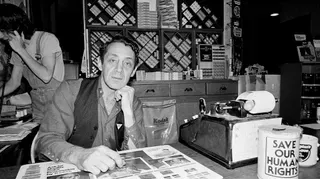September 28, 2013
Iran's Revolutionary Guard Unveils Attack Drone
Michael Cox READ TIME: 2 MIN.
Iran unveiled on Friday an unmanned attack aircraft it described as its most sophisticated drone to date that can reach much of the Middle East, including Israel.
Revolutionary Guard chief, Gen. Mohammad Ali Jafari, called the missile-carrying plane a "strategic asset" for the military to protect Iran's borders.
The military says the Shahed-129, or Witness-129, has a range of 1,700 kilometers (1,050 miles), a 24-hour non-stop flight capability and can carry eight bombs or missiles capable of hitting both stationary and moving targets.
Iran frequently makes announcements about strides in military technology, but it is virtually impossible to independently determine the actual capabilities or combat worthiness of the weapons it produces.
"Our scientists, through scientific struggle, have built Iran's most strategic unmanned plane," Jafari said in remarks posted on the guard's website on Friday. He said the drone was designed and built using entirely home-grown technology.
State TV showed video of the drone flying. It said Jafari has ordered mass production of the unmanned plane.
"This smart technology (drone) can do the job of thousands of soldiers, military posts and border guards ... and protect the security of the borders," the website quoted him as saying.
Jafari also said Guard experts have finished reverse-engineering a top secret CIA RQ-170 Sentinel drone that Iran captured intact in December 2011. Iran has also claimed to have captured at least three American ScanEagle drone aircraft that violated the Iranian airspace.
Jafari said an Iranian copy of the RQ-170 Sentinel drone will be built soon.
"In the near future, you will hear good news on the building of an Iranian replica of the RQ-170," he said.
A senior Revolutionary Guard commander, Gen. Amir Ali Hajizadeh, said the Shahed-129 was capable of monitoring for up to 200 kilometers.
Hajizadeh, who heads the Guard's aerospace division, said the attacking drone has also civilian uses such as taking aerial photos for agricultural and environmental purposes.







